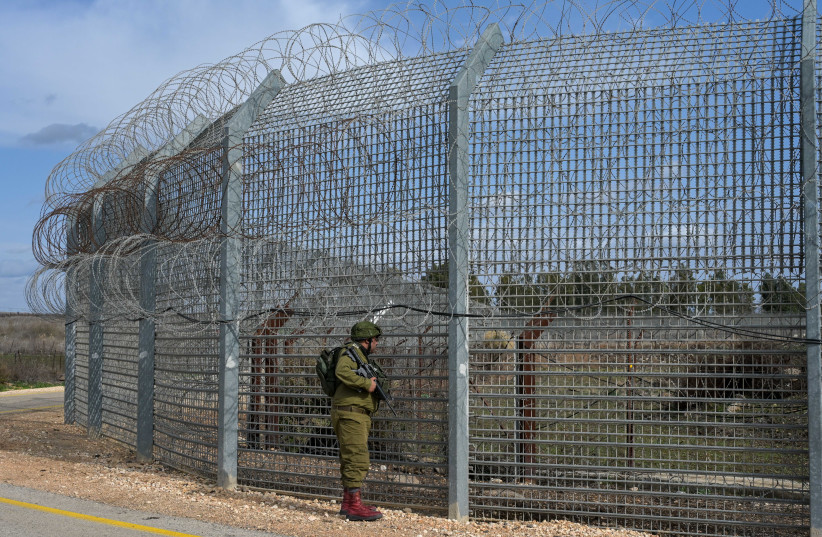The Golan threats: Another phase in the ‘campaign between the wars’- analysis
Iran has said that it is working on a new strategy against Israel. This is described by Iranian media and regime members as an attempt to “unify” various fronts against Israel. The multi-front was previewed this month when Iran encouraged Hamas to fire rockets from Gaza, and then from Lebanon and then operationalized another group called Liwa al-Quds in Syria to fire more rockets during the day after Passover. Iran also boasts of using “unseen” hands to move weapons to the West Bank.
Iran’s goal is to keep Israel on the defensive and force the conflict into Israel’s backyard, essentially negating Israel’s advantages in the air and at sea and in other domains where Israel’s hi-tech can defeat Iran more easily. In essence this new strategy seeks to shift the conflict called the “Campaign Between the Wars” such that Iran is no longer suffering challenges to its entrenchment in Syria, but rather moving its pawns closer to Israel.
While this trend has existed for years since the Syrian regime returned to the Golan border in 2018, it was on display this week and last week, as Israeli artillery responded to Iranian-backed threats near the Golan. In addition social media accounts in Syria showed images of what they said we leaflets that are warning people there to be distant from Hezbollah. According to reports the leaflets directly mention a Syrian regime commander and Hezbollah officer. There was another incident on Tuesday, the 18.
 Israeli soldiers patrol the area following this morning’s border incident at the border fence with Syria, in southern Golan Heights, on January 29, 2023. (credit: MICHAEL GILADI/FLASH90)
Israeli soldiers patrol the area following this morning’s border incident at the border fence with Syria, in southern Golan Heights, on January 29, 2023. (credit: MICHAEL GILADI/FLASH90)Are the threats to the Golan a new normal?
There was another threat in early April when Iran flew a drone from Syria over the Golan and it was brought down. That makes at least three incidents in the area in a month. How many incidents represents a new trend and phase in the Campaign Between the Wars. Back in the fall of 2017 reports said that Russia had rejected demands to encourage the Syrian regime to keep Iran and Iran-backed units over 60km from the border when the regime returned to the area. This is important because Russia was sending military police down to the area at the time. Syrian rebels were reconciling with the regime. The US also has a garrison at Tanf which is around 260km from the border. Tanf garrison has an exclusion zone of 55km around it. If you do the math and subtract 60 km from 260 and then subtract another 55 you end up with a 145km gap where Iran would have influence between the exclusion zone of Tanf and the suggestion of a zone of non-Iranian entrenchment near the Golan.
However, Iran doesn’t want that. Instead the Iranian octopus keys in various units between Albukamal and Deir Ezzor along the Middle Euphrates River Valley (MERV) where it targets US forces, and then near Tanf and the Golan and at T-4 base near Palmyra. This is how Iran operates in southern and central Syria. In the north it also flies weapons into Aleppo under the cover of earthquake aid. The overall conclusion is that Iran is up to a lot of activity in Syria and that although it may face challenges, the artillery incidents near the Golan point to continued Iran-backed activity that is close to the border. This is a shift from Iran’s movement up by Aleppo in February and March. That movement led to reports in Syrian regime and Iran media of numerous airstrikes on Iranian shipments in Syria in March. Iran responded with the drone incident in early April and followed up with the “unity of front” campaign over Passover and now the apparent threats near the Golan led by the Iranian commander in the Syrian regime 4th division, and a key Hezbollah intelligence officer. It should be noted that back in August 2019 Hezbollah also moved a drone team up to an area near the Golan. That unit was neutralized in August 2019. But Hezbollah didn’t stop there, it continued to build up a Golan file according to the Alma Research and Education Center’s 2020 report. The recent threats may be a new manifestation of that.
During the Syrian civil war there were often threats to the Golan. Relative quiet appeared to increase after 2018. Now in 2023 the tensions appear to be building again.





Comments are closed.